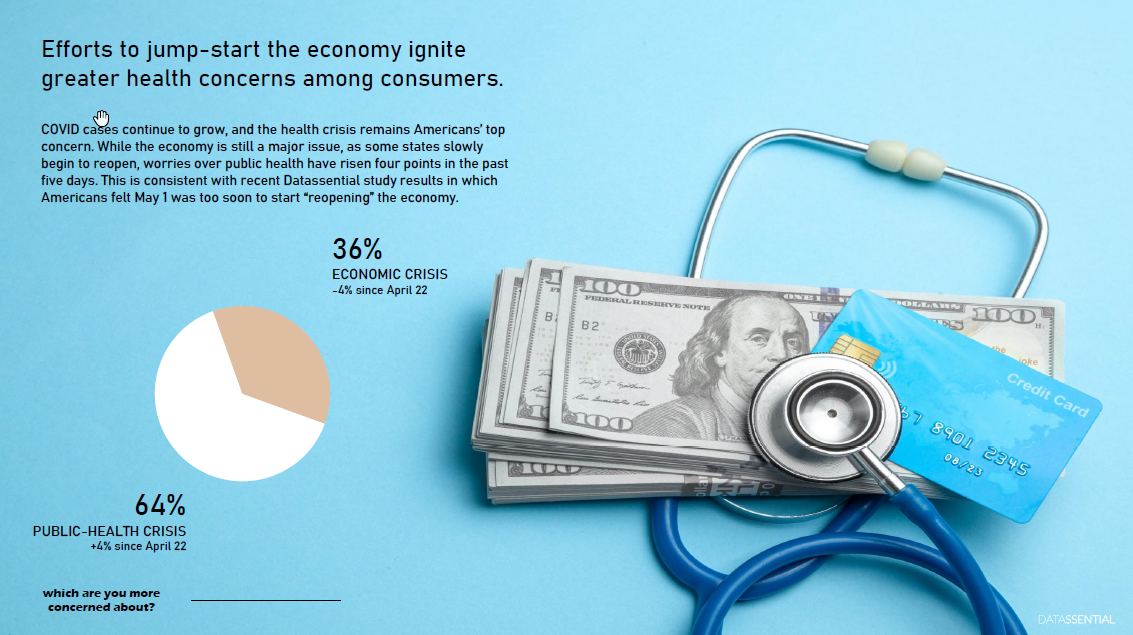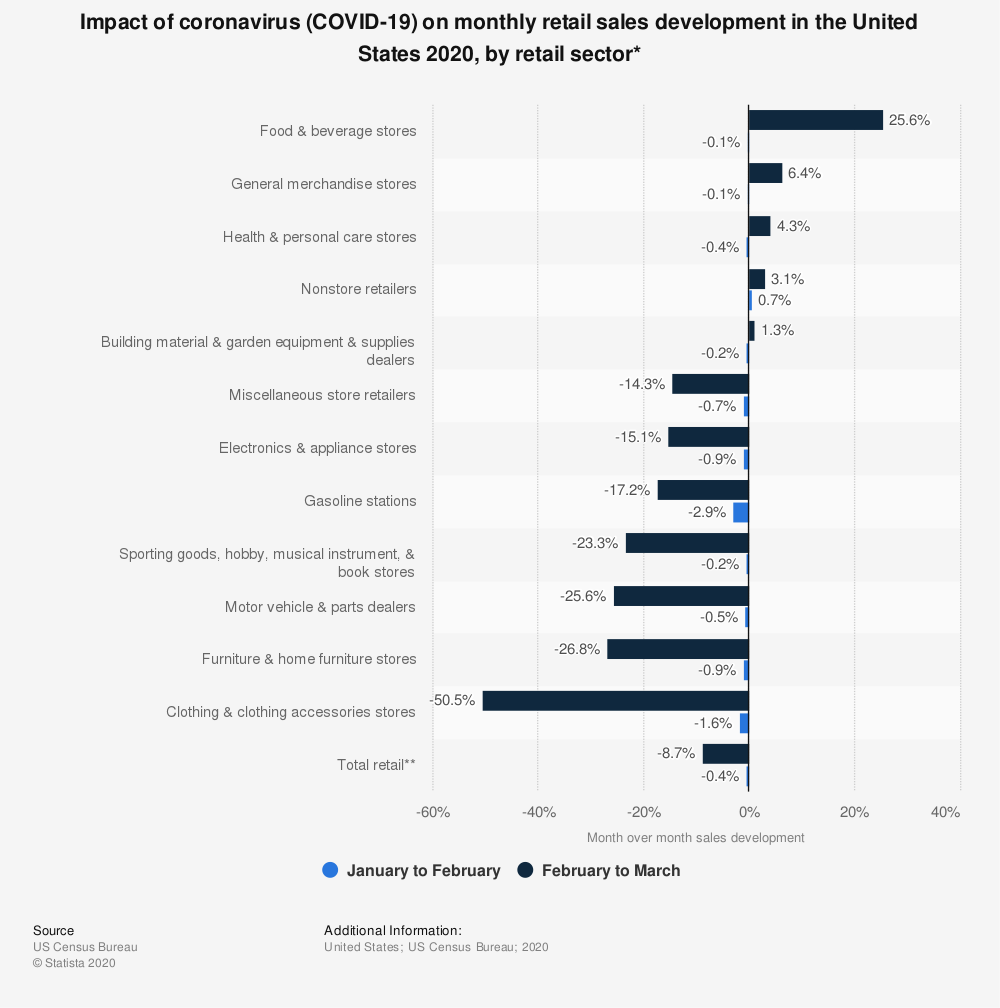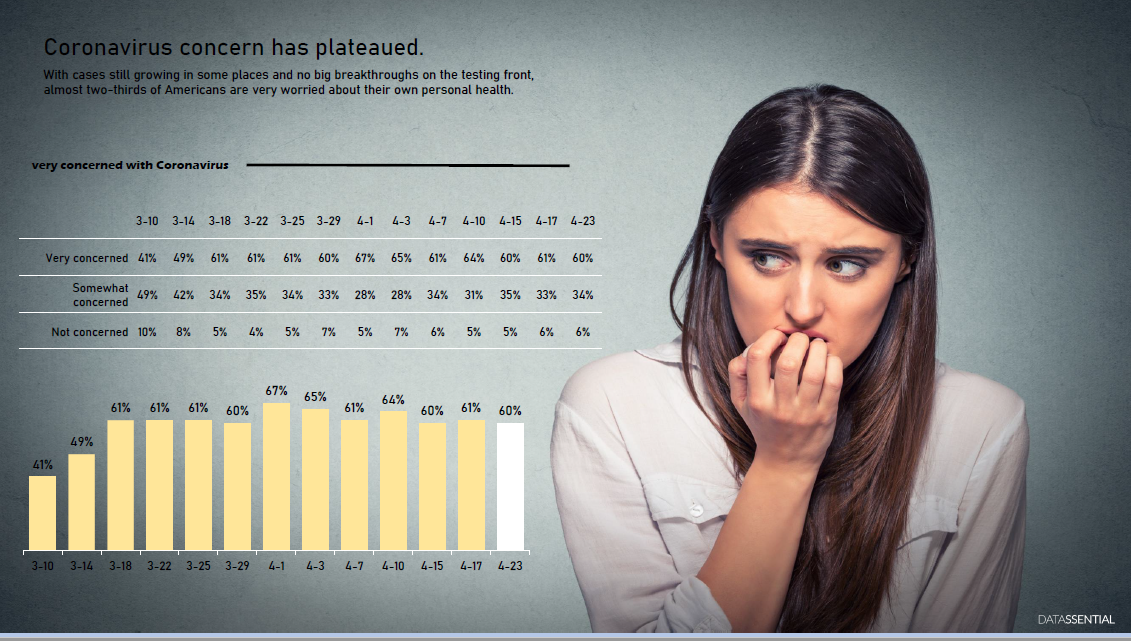Tea Industry News for the Week of May 4.
- Ominous Fiscal Impact
- Online Grocery Orders Up 37%
- Tea Supply Not a Grave Concern
- Post Offices on the Front Line
- Seattle Caps Delivery Commissions

The pandemic is advancing the role and reputation of specialty tea in protecting the health and enhancing human immunity. At the same time, the economic impact threatens every link of the tea supply chain.
Marketers are wise to address health over wealth.
Consumer marketing surveys in several countries, as well as professional opinion research, indicates a “high level of concern” about becoming infected.
Last May, “health care emerged as the top policy issue for American voters at 36%,” according to Real Clear Opinion Research. Concern about the economy was the top issue for 26% of respondents. Health concerns are now top-of-mind for 66% of respondents in the U.S., according to the Edelman Trust Barometer.
Edelman surveyed a representative sample of adults in 11 countries. In Canada, the United Kingdom, and France 70% or more of respondents favor prioritizing health concerns. In Japan, 76% of those surveyed by Edelman cited health concerns.
“A substantial majority of people around the world want their governments to prioritize saving lives over moves to restart economies being hammered by measures aimed at halting the spread of the new coronavirus,” according to the Financial Post,
Overall, 67% of the 13,200-plus people interviewed between April 15 and April 23 agreed with the statement: “The government’s highest priority should be saving as many lives as possible even if it means the economy will recover more slowly.” One third said it is more important that governments save jobs and restart the economy.
Only 29% of those surveyed agreed that CEOs and business leaders were doing an “outstanding job” meeting the demands of the moment.
“It’s complicated because you have two crises simultaneously – a health crisis and an economic crisis,” said Richard Edelman, CEO of Edelman.
“Business will be looked at very closely in the months ahead,” Edelman said, citing how companies perform in areas such as retaining and reskilling workers or using small businesses in their supply chains.

Dramatic Drop in Economic Activity
Economic activity dramatically declined in late March, and consumer confidence plummeted in April as jobless totals soared.
In April business activity at service companies fell to the lowest level recorded. The near-collapse in the service side of the economy has dragged the U.S. into what’s all but certain to be a deep recession. The government has rushed to aid hundreds of thousands of desperate companies with loans and other help, but it’s unclear if it will be enough, according to the Institute for Supply Management.
In tea retail, suppliers that rely on foodservice sales are the segment most impacted. Blenders in the grocery segment are still playing catchup to the stocking-up rush that is now decreasing.
Sales of tea in grocery and convenience will plateau until pantries empty. A fundamental shift away from traditional trips to the grocery store is underway, led by those who order online. Online market research specialists Brick Meets Click found that April sales of groceries sold online grew by 37% to $5.3 billion. Forty million Americans ordered groceries online in April, increasing both frequency and spend, according to the results of a natural consumer survey. Orders increased from 1.2 to 1.6 per month and spend rose to an average $85 per order, up from $82 in March
The April wave of surveys looked at two additional factors to help us understand the health and economic motivators impacting shopper’s behaviors writes Brick Meets Click.
- Health: 47% of the households surveyed indicated a “high level” of concern related to catching/contracting the Coronavirus.
- Economic: 39% of the households surveyed indicated that their average monthly household income since the COVID-19 crisis started had dropped dramatically – 25% or more – compared to Jan/Feb 2020.
Reopen Now or Not?
In the U.S., where the contagion has killed more than 70,000 people, about half of the states are easing restrictions on business.
Retailers considering reopening should bear in mind that most Americans are not ready to risk infection by going out. While 56% say they are comfortable making trips to the grocery store, 78% indicate they would be uncomfortable eating at a sit-down restaurant. “People in states with looser restrictions report similar levels of discomfort as this in states with stricter rules,” according to a Washington Post-University of Maryland poll conducted last week.
In announcing plans to ease the restrictions on businesses, governors have emphasized that their actions represent a gradual and cautious reopening of their economies. Nonetheless, when asked about eight different types of businesses, majorities of Americans say they oppose ending the restrictions on each of the eight.
“Fear of infection, the poll finds, has not abated at all in recent weeks,” according to the Washington Post.
Datassential polls 1000 consumers weekly, beginning in March. The chart below suggests consumer fears have plateaued with 94% either “very concerned” or “somewhat concerned.” Only 6% say they are not concerned.

Note to Brands
Consumer sentiment is clear: Businesses have a responsibility to ensure their employees are protected from the virus in the workplace and do not spread the virus into the community (78%). They want businesses to focus on solutions, not selling. In a survey of 12 countries, many consumers indicated businesses should shift to producing products that help people meet the challenges (89%). One in three (33%) say they have convinced other people to stop using a brand “that I felt was not acting appropriately in response to the pandemic.”
Brands must do everything they can to protect the well-being and financial security of their employees and their suppliers, even if it means suffering big financial losses until the pandemic ends. – Edelman Trust Barometer 2020
Tea Supply is not a Grave Concern
Lockdowns in tea producing countries are gradually easing, permitting the harvest to resume, but logistical hurdles are mounting as the cost of airfreight, the preferred method of transport early in the season, tripled. The availability of cargo space on aircraft is greatly limited due to the virtual absence of commercial flights. Overburdened carriers are increasingly tasked with flying far more precious or urgently required goods. In India, the national rail service is shut down and trucking fleets are idle.
Containers are piling up at ports, and ships lie at anchor awaiting medical clearances.
Available airfreight on passenger planes in March was down 44% globally compared to the same period in 2019. Dedicated air freighters added more flights, but overall capacity was down by 25% in March, according to the Wall Street Journal.
The cost of air freight from China to the U.S. increased from $3 per kilo in March to $11 per kilo in April and continues to climb.
Paul Golland, owner of P.G. Logistics, a freight-forwarding business in Australia, told the Wall Street Journey that. “You used to get a quote valid for 30 days. Now you’re getting it valid for 24 hours, because tomorrow the situation may change again.”
“International postal services have been among the hardest hit. Many have reduced or suspended international mail in recent weeks due to a lack of flights,” according to the article. The U.S. Postal Service last week said it would start shipping mail by sea to 10 European countries.
In India, Amazon and Walmart are restricted from making deliveries except for food and medicine, which greatly increased the workload for that nation’s 400,000 postal workers in 150,000 branch offices. About the only service tea vendors can count on is mail delivery. India operates the largest postal service in the world and is rising to the challenge. As the Wall Street Journal reports, “courier competitors can’t deliver. They depend on commercial flights and trains, which aren’t running, their truck fleets aren’t allowed on their roads, and their employees can not get to work.”
U.S. Postal Service employs 633,000 in 32,000 post offices, annually delivering 142 billion pieces of mail. But in April, due to the Coronavirus, Postmaster General Megan Brennan told Congress that volume declined by a third and is expected to fall by half by the end of June. E-commerce is surging, but bulk and business mail account for far more business. Postmaster Brennan estimates the shortfall at $25 billion.
The Human Condition
Datassential reports that only 15% of Americans are still going to school or working as usual. There are now 17% stuck at home due to layoffs and furloughs. An additional 37% of those taking part in a weekly survey are working or attending school remotely, with 31% not working overall.
“While most Americans are apprehensive about the reopening of non-essential businesses, they favor people visiting open-air locations like parks and beaches, where they can keep social distance. As you might expect, people who are currently more concerned about the economic crisis are much more accepting of visits to all types of venues than those more concerned about public-health implications. Having guidelines in place for reopening and familiarity with grocery store precautions have likely also paved the way for other retailers. One-third of Americans are OK with visits to places like shopping malls, hair salons, and restaurant dining rooms,” according to Datassential.
Jack Li at Datassential is optimistic that restaurants will remain a vital part of social life after the crisis eases: “People miss dining in restaurants, not just for the food, but also for the psychological benefits. When dining rooms reopen, there will be a heightened appreciation for them and the sense of normalcy they evoke. Americans associate dining in with better pre-COVID times and happy “milestone” celebrations. Restaurants will also provide an opportunity for people to do their part and reconnect with their communities.”
How soon will this end? Simon Baptist, Chief Economist at EIU, writes that “even in countries where containment measures are being eased, economic activity will be slow to pick up. For instance, even though India partially eased restrictions on April 20, high-frequency data on electricity consumption shows no change in demand from the week before.
Delivery Fee Caps
Last week Seattle instituted a local ordinance capping third-party delivery service commissions at 15%. The intent is to address price gouging during lockdowns temporarily. Violators are subject to prosecution by the Seattle City Attorney’s Office and face steep fines. San Francisco is enforcing a similar ordinance capping service commission at 15%. Chicago and New York City are also considering enacting commission caps. In New York, the proposed cap is 10%. The Seattle ordinance mandates delivery drivers get the full amount of tips and makes it a crime for third-party delivery companies to cut drivers’ pay. The ordinance remains in effect until restaurants are allowed to resume unrestricted dine-in services.
Best Retail Practices
- Daily wellness checks for all employees (back of store and front line)
- Provide ample (non-medical) masks, single-use gloves and additional PPE as required (plexiglass cashier shields etc.)
- Clean high-touch surfaces every two hours.
- Encourage hand washing every half hour for food handlers.
- Seal orders in packaging and do not let cashiers handle food.
- Apply social distancing floor decals and display distancing reminders.
- Make sanitizer available at checkout and in stand-alone dispensers at entry.
- Avoid cash transactions and sanitize credit-card terminals after each use.
- Disinfect entire store at the end of each day and schedule periodic deep-cleaning
Encourage customers to order online and at digital kiosks. Avoid face-to-face interaction by offering carry-out, curbside pickup, drive-thru, and contactless delivery. Customers should insert their own credit card into payment terminals (and stores should opt for “tap to pay” where available). Rely on video and remote methods of communication to minimize consumer contact with store personnel.


